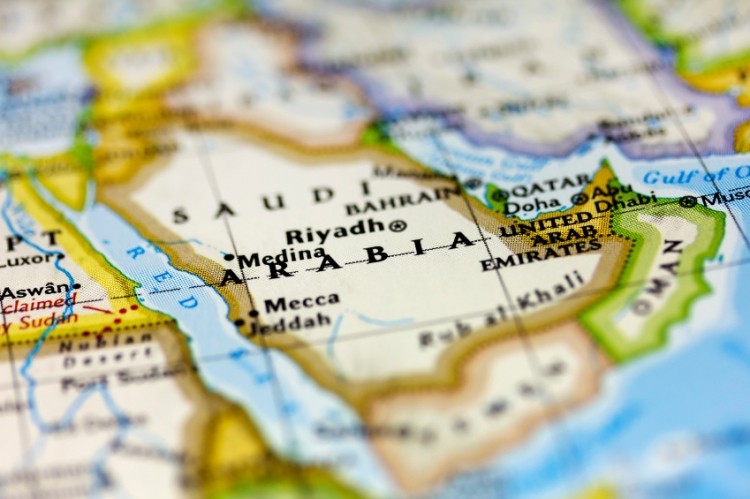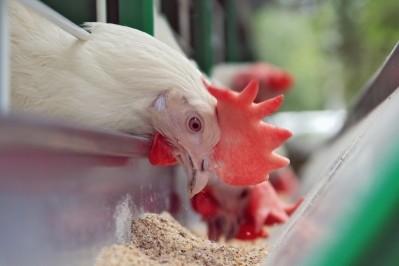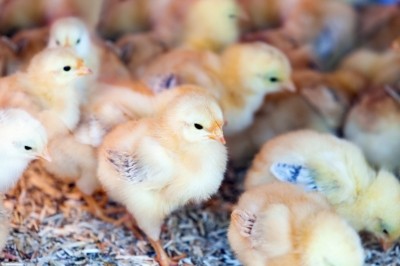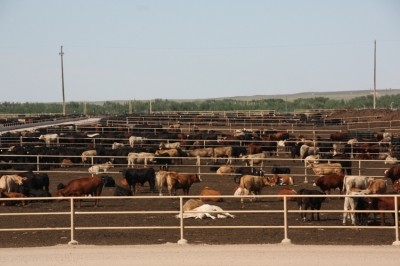Saudi broiler producers concerned over lower feed subsidies, but production hikes expected: USDA

Feed costs account for about 70% of broiler production investment in Saudi Arabia, and there is a heavy reliance on feed product imports, said the authors. Furthermore, there are also costs involved in controlling the temperature in the chicken barns given the extremely hot weather conditions.
In recent years, that expenditure coupled with the high poultry mortality rate have forced small poultry farmers to shut down production and establish cooperative farming agreements with larger farmers.
Feed subsidies hit
So many Saudi producers, said the USDA Foreign Agriculture Service (FAS) analysts, are concerned the recent lowering of government feed subsides will further increase their outlays and reduce their ability to compete with lower priced imported products from countries like Brazil.
In order to help local poultry producers cope with the high production costs, the Saudi government (SAG) has been providing various types of production supports including subsidies for animal feed, interest-free loans and rebates on the purchase of certain poultry equipment.
Indeed, Saudi poultry market specialists estimate that locally produced broiler meat receives about $0.53 per kg of government subsidy on average.
But, in June 2015, SAG reduced its subsidies on 31 imported feed ingredients between 22 to 62%, based on the energy and protein contents of each feed ingredient, as a result of the decline in international feed prices.
Import subsidies on 48% protein soybean meal and corn were reduced by 32% each to $137 and $82 per MT, respectively, while the import subsidy on sugar cane molasses was reduced by 62% to $33 per MT. Those on distillers’ dried grain with soluble (DDGs) and corn gluten feed (CGF) were reduced by 26 and 27% to $99 and $91 per MT, respectively.
Production expansion
However, despite such production challenges, the USDA researchers still projected that total broiler meat imports into Saudi Arabia will drop slightly in 2016 to 850,000 MT, as local broiler production expands.
They said broiler meat output in the Kingdom will reach the 700,000 MT mark this year, and rise by an additional 20% in 2016 on the 2014 figure – that translates as an additional 80,000 MT.
The recent surge in broiler production in the country, noted the GAIN report, is mostly attributed to ongoing development work at the three largest Saudi poultry producers: Al-Watania Poultry, Fakieh Farms, and Almarai Company.
Those expansion projects started in 2010 with a total investment of more than $2.83bn overall, noted the GAIN report.
The USDA analysts expect the three largest Saudi poultry companies to continue their production expansion for the coming years, although at different levels of intensity, with those producers accounting for about 70% of the total domestic broiler meat production by the end of 2017.
Company targets
Al-Watania has increased its annually production to 180,000 MT in 2015, an increase of more than 31% compared to production levels in 2010. The company is also constructing a new mega poultry farm in Bisaita in Al-Jouf Province, which is expected to be operational by 2020 and to have a total production capacity of one million broilers a day.
The producer is also looking to boost its table egg production three fold, to three million eggs per day in the next few years.
Fakieh Poultry Farms, the second largest broiler meat producer in that market, is currently undergoing massive expansion to the tune of $800m to boost its annual production from about 430,000 broilers a day or about 124,000 MT a year to 1,000,000 broilers a day or 288,000 MT by 2020, said the GAIN report.
Almarai Poultry Farm, owned by Almarai Food Company, the leading food processing company in Saudi Arabia, entered the broiler meat production business in 2009 by purchasing the former Hail Agricultural Development Company (HADCO) poultry farm. Since acquiring HADCO, the company has been engaged in a major broiler meat production investment projects estimated at $1.1bn.
“This investment should increase Almarai’s Alyoum broiler meat production from 20,000,000 birds in 2009 to 150,000,000 in the next few years,” said the USDA team.
Controlling disease
They said that Almarai poultry is one of the few poultry farms in Saudi that has been able to reduce broiler mortality rate to below the national average of 25%, allowing it to constantly increase productivity and reduce production costs.
Controlling poultry disease outbreaks has continued to be among the major challenges facing the Saudi poultry industry in recent years, said the USDA.
The country lacks a national program for poultry disease prevention. Citing industry sources, the authors of the GAIN report noted chicken mortality rates remain as high as 50% on some farms, mostly attributed to outbreaks of viral diseases such as Newcastle Disease (ND), Gumboro (IBD), Infectious Bronchitis (IB) and Avian Influenza (H9N2 subtype).
The GAIN report also reveals the Saudi Agricultural Development Fund (ADF) is considering a new insurance program to reduce the financial risk for poultry producers arising from the high chicken mortality rate.
It aims at helping establish a stricter bio-security plan for participating poultry farms, reducing chicken mortality rate from 25 to 5% to boost broiler production, and intends to compensate farmers for the financial loses they incur from poultry diseases outbreaks.
“The newly proposed insurance program, if and when implemented, makes the government responsible [for covering] 90% of the insurance costs, while the producers pay 10% of the costs in the first year, with their commitment to adhere to a strict biosecurity scheme devised by MOA [Ministry of Agriculture].
According to the proposal, the government’s contribution would be gradually reduced by 10% annually," said the GAIN report.
The USDA report can be read here.












